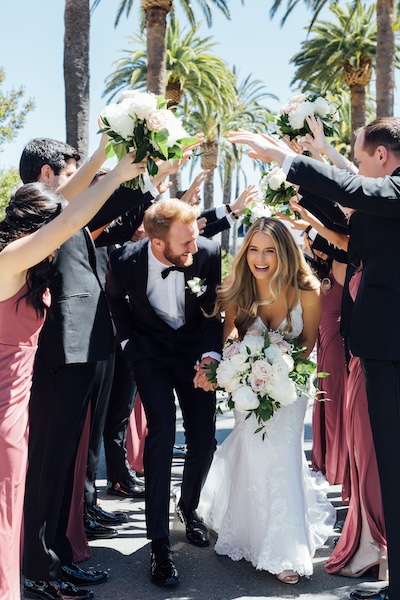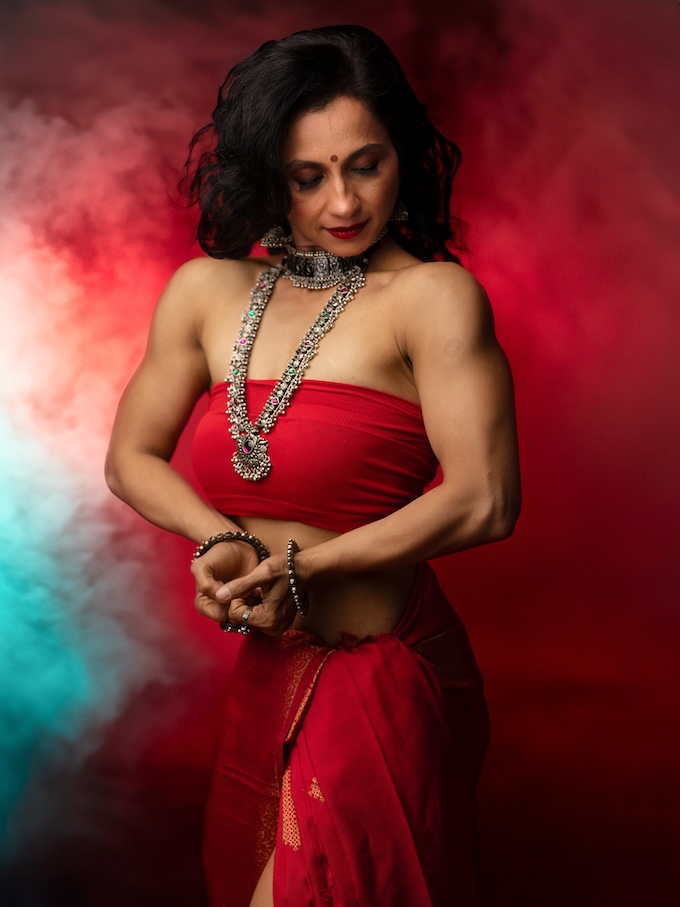Business + Marketing
As of 5/2/22, this information has been fact-checked and everything is up to date.
When wedding photographer Rebecca Yale hit a wall selling her online photography course, she turned to Sandra Coan for help, a portrait photographer and seasoned educator she met at WPPI this year. Here is the story of how one photographer empowered another with the tools to triple her sales using the community-driven force of social media.
Rebecca Yale is a fine-art wedding and lifestyle photographer based in New York and Los Angeles. Having won multiple awards in the Details category of Rangefinder’s Wedding Contest, she’s sharing her insights in her flat-lay styling e-course.
Sandra Coan is a photographer specializing in newborns, families and classic portraiture. Her current e-course, “Content Marketing (My Marketing Magic Bullet),” focuses on creating an action plan for a year’s worth of marketing materials.
Rebecca Yale: When I began working in portrait photography in 2011, the biggest social media outlet was Facebook. By mid-2013, however, Instagram was taking over as the platform of choice for my clients. I signed up, worked on creating a consistent feed, showing only professional work, and my following grew steadily into the thousands. Then in the summer of 2015, I shot an editorial with a fashion influencer, who goes by @lateafternoon on Instagram, that was published in Flutter Magazine and later on Style Me Pretty. My following took off, multiplying by thousands more in the next few months.
Over the next few years, I did more shoots with influencers as well as takeovers on Instagram, including for Style Me Pretty, Martha Stewart Weddings and The Knot, and two years ago, I started a series on Instagram called Behind the Frame; every Monday, I post an image with an in-depth caption, detailing my process for creating it. I originally intended for these posts to market my services to potential brides and grooms, but in analyzing the spikes in engagement, I found the people responding most were other photographers. Brides and grooms come and go as followers, but the majority of my following is other people in the wedding industry, and I realized there was a space for me to give back to the community by teaching others.
I had been hesitant to get into the teaching space at first. It felt crowded with workshops that didn’t teach what I wanted to share: visual theories relating to Susan Sontag, or Plato, or how to use the Fibonacci spiral to create dynamic imagery. But I was constantly hearing photographers lament about walking away from workshops with no deeper understanding of how to create these images on their own. I wanted to change the way people saw the world through their lens and re-wire the way their brains created imagery at its core, as I had done during my time in art school.
So, I chose to speak on that topic at Richard Photo Lab during WPPI in Las Vegas this year, with my course “More Than Pretty Tones: Taking Images That Matter,” and after sharing it on social media, my class was packed. I was flooded with messages on Instagram from photographers saying they’d be happy to pay for it if I would share the class online.
Coming home from Las Vegas, feeling inspired that there was a space and a desire for this deeper learning in the photo community, I decided to turn my presentation into an e-course, recording my voice and then editing it with my slide presentation to create a downloadable video. I self-published it through my own website and hosted the course through SendOwl, which let me upload the high-resolution video so that students could purchase it via PayPal, download it onto their desktops and watch it as many times as they wanted.
I priced the e-course at $99—I felt that sounded fair, for the amount of detailed information I provided, and the fact that I hadn’t seen another course for wedding photographers addressing semiotics. Someone would easily pay $50 to hear it live, I figured, and the ability to watch it again and again made it worth more.
I didn’t advertise the e-course, other than implementing a half-off sale for the first two weeks of the course’s launch; I shared that on my Instagram account and on a few different Facebook groups that I’m a part of, including one for WPPI alums and one for film shooters. Soon after, the course was downloaded over 200 times—a little over $10,000 for me. But the best part was knowing this was a project I wholeheartedly stood behind, was proud of and that I knew would truly help people. Dozens of glowing testimonials were pouring in.
But after two weeks, when the sale price ended, my course hit a wall. I posted it on Instagram again and showed clips of it in my Instagram stories. I shared it in some Facebook groups. But I had no clue what to do next. Luckily, at WPPI through Richard Photo Lab, I had met the incredible Sandra Coan, who has successfully sold several online courses. I remembered that she had offered to answer any questions about launching my e-course if I gave her a call.

From “The Missing Link” by Sandra Coan: “In this course, I teach film photographers how to use studio lights to mimic natural light. This image was captured using a Hasselblad H2, Fuji 400H film, a Profoto B2 strobe head and a 5-foot Photoflex OctoDome.” Photo © Sandra Coan
Sandra Coan: About three weeks after I got back from teaching my course, “Shooting Film with Artificial Light,” at WPPI, my phone rang. It was Rebecca Yale. I was thrilled when she told me when I met her in Las Vegas that she was going to turn the class she was teaching there into an online course, and now, sharing what she had accomplished in the weeks since, I thought she had done a good job with her launch. But I knew she could do better.
Unlike Rebecca, I do not have a huge Instagram following, but I still make tens of thousands of dollars each year selling educational materials on business, studio lighting and film photography to fellow photographers, and I do it, primarily, by strategically using the power of Facebook groups.
Anyone in sales will tell you that it is hard to sell to “cold traffic,” or people who are not familiar with you or your brand. A Facebook group is a perfect place to build community while creating buzz about course topics. Creating a group lets you introduce your brand directly to your target audience. It gives you the opportunity to “warm up” your following by providing them with a safe space to share helpful content and develop conversations that revolve around specific needs that you can tap into.
I first used this technique about two years ago when preparing to launch an online course with my friend and business partner, Elena S Blair.
While we were writing our business and marketing class, we created a Facebook group that focused on our target audience: female photographers looking to grow profitable businesses. We called the group Lady Boss Workshops and used it to share blog posts we wrote about business and marketing, host live Q&A sessions that dealt with specific business-related topics and build our email list by offering valuable opt-in content.
The group quickly became a supportive community of likeminded women. They shared their struggles and victories with each other and asked us for advice when they were frustrated, unsure or stuck. Answering their questions and concerns established ourselves as trusted educators, but it also gave us tremendous insight into their needs. We were then able to use those insights to create specific marketing content—blog posts, newsletter opt-ins—that we knew would be helpful to our community.
When the time came to launch our first class, we had a small but thriving group of around 700 people who already knew and trusted us as educators. And in just two weeks, we were able to gross a little over $30,000 by marketing only to our Facebook group and email list.
We continue to grow and nurture the Lady Boss Workshops group and have since had two more equally successful launches. Lady Boss Workshops focuses on the business side of photography for women and nothing else, but you can also create groups around broader topics with equal success. I created a group called A Place for Family Photographers, and because the topic of the group is so broad, I can use it to share educational resources that I make on my own as well as the courses I teach on other platforms such as CreativeLive, KelbyOne and Click Photo School.

From “More Than Pretty Tones” by Rebecca Yale: “The image on the right is an example of one of my favorite bouquet shots, and on the left is the outtake, where you see her head turned the other way. The slight turn of her chin in line with the swoop of the dress complements instead of fights it, allowing the eye a much easier journey through the photo without getting drawn back up to the face.” Photos Above and Below © Rebecca Yale

“Here, I posed a couple using only mistakes I see every day in portfolio reviews (left); the image on the right is how to fix it. On the left, they are facing each other, but without pulling each other in, the image lacks spark. On the right, he pulls her in towards him, they wrap their arms around each other, and the image springs to life. The triangle shape they created with their bodies is pleasing to our eyes and makes them feel connected.”
Rebecca Yale: I’m in the middle of launching my second course, which is all about styling flat-lay images of wedding-day details, and I’ve been splitting my time between creating the course and creating the community that’s interested in learning about this. I have a free downloadable course on my website, at Sandra’s suggestion, called “Top 10 Tips to Flawless Flat Lays,” and I am building my mailing list when people download the PDF. The download also leads you to my Facebook group, called Flat Lay Styling, and it invites you to join the conversation there so that I keep people engaged and continue to warm the traffic.
So much of who I am as an artist has been shaped by my mentors through intense and painful critiques, but artistry is just like a muscle—we need to break it down to build it back stronger. The opportunity to give this one-on-one feedback in a group setting where everyone can learn from critiques is extremely valuable. As the group grows, I understand that I won’t be able to personally give feedback to each and every member, but my goal is, as people feel more confident in their work through my course, my students will become fellow teachers within the social space, passing it forward as I am doing with those who have helped me.

From “The Missing Link” by Sandra Coan: “Captured on a Rolleiflex 2.8 camera with Ilford Delta 3200 film, a Profoto B2 strobe head and a 5-foot Photoflex OctoDome, this demonstrates a lighting technique I teach film photographers.” Photo © Sandra Coan
Making Your Own Group
Sandra Coan: It’s better to create your own group than sell your work in someone else’s group. Facebook groups are like parties, and you wouldn’t want to go into someone else’s party and steal the show.
Decide what you want to build for your community. Do you want to cover a specific topic (like Lady Boss Workshops does) or something broader (like A Place for Family Photographers)? Rebecca’s course on flat-lay styling is very specific, so it’s best for her to have a group dedicated to that one specific theme, but in the future, she can always create a broader group if she feels that that is what her community needs.
Go to the “Groups” section on Facebook—the platform’s instructions from there are pretty straightforward. Once your group is up and running, write a description for your members about what your group is and who it is for. Don’t forget to include a bit about the rules of conduct. All of my groups include two rules: Be Kind and Add Value.
Share a link to your group on your personal Facebook profile and your business profile. As people join, encourage them to add their friends. You will be amazed by how quickly your community will grow.
Treat your group like a party you are hosting. Remember, Facebook is all about community and engagement, so mingle. Get to know your guests. Provide value. Then, when you are ready, share your course.
Related: The Story Behind #sarinotsorry, an Ambitious Insta-Forward Portrait Series in Sri Lanka
7 Facebook Mistakes You Don’t Want To Make
The Benefits of Going Organic-With Marketing, That Is









